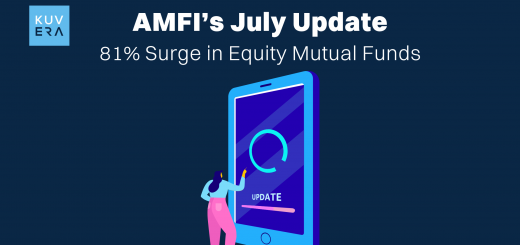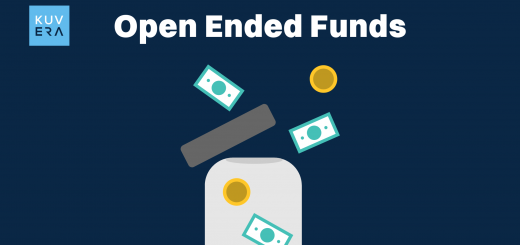Infrastructure Debt Mutual Funds (IDF-MFs) are gaining prominence as a vital investment vehicle in mutual funds India, addressing the pressing need for long-term financing in the infrastructure sector. These funds provide investors with an opportunity to participate in the growth of essential infrastructure projects while potentially earning steady returns. This article explores the characteristics, benefits, risks, and investment processes associated with IDF-MFs in India.
What are Infrastructure Debt Mutual Funds?
IDF-MFs are regulated under the Securities and Exchange Board of India (SEBI) regulations, ensuring transparency and compliance, much like other categories within mutual funds India that support economic growth through structured investments. These funds primarily invest in debt securities and securitised instruments associated with infrastructure projects, ensuring that at least 90% of their net assets are allocated to these areas. This focus not only supports critical projects but also provides investors with a relatively stable investment option compared to equities.
Key Characteristics of IDF-MFs
| Characteristic | Description |
|---|---|
| Investment Structure | Operate as trust-based mutual funds, allowing diverse investor participation. |
| Regulatory Compliance | Adhere to SEBI guidelines ensuring transparency and investor protection. |
| Investor Composition | Minimum of five investors; no single investor can hold more than 50% of net assets. |
| Focus on Infrastructure Debt | At least 90% of net assets invested in debt securities related to infrastructure projects. |
The growing demand for infrastructure financing in mutual funds India is driven by factors such as urbanisation, population growth, and the need for improved public services. IDF-MFs play a crucial role in bridging the funding gap by attracting both domestic and foreign investments into the sector.
Benefits of Investing in IDF-MFs
Investing in IDF-MFs can offer several compelling advantages. These are as follows:
1. Stable Returns
Focus on debt instruments tied to infrastructure projects offers predictable mutual fund returns that are generally less volatile than stock market investments.
2. Portfolio Diversification
Incorporating IDF-MFs into an investment portfolio helps achieve better diversification, balancing overall portfolio risk.
3. Long-Term Growth Potential
Ideal for investors with long-term financial goals, such as retirement planning or wealth accumulation.
4. Contribution to National Development
Directly supports India’s infrastructure growth by funding critical projects like roads, airports, and power plants.
5. Tax Efficiency
Certain IDF-MFs may offer tax advantages under specific conditions, making them an attractive option within mutual funds India for investors seeking both stable returns and tax efficiency. Tax implications may vary based on individual circumstances and fund structures, potentially affecting the net mutual fund return an investor receives.
Summary of Benefits
| Benefit | Description |
|---|---|
| Stable Returns | Predictable income with lower volatility compared to equities. |
| Portfolio Diversification | Helps balance risk across different asset classes. |
| Long-Term Growth Potential | Aligns with extended investment horizons for retirement or wealth accumulation. |
| Contribution to National Development | Supports essential infrastructure projects that enhance economic growth. |
| Tax Efficiency | Potential tax advantages based on fund structure; consult tax advisors. |
Risks Associated with IDF-MFs
While IDF-MFs can provide relatively stable returns, they generally carry a higher risk profile than traditional fixed-income investments due to credit exposure, market fluctuations, and the long-term nature of infrastructure projects.
1. Interest Rate Risk
- Definition: Interest rate risk refers to the potential for investment losses due to changes in interest rates. When interest rates rise, the market value of existing debt securities typically falls.
- Impact on IDF-MFs: Since IDF-MFs primarily invest in fixed-income securities, rising interest rates can impact mutual fund returns, leading to a decline in the net asset value (NAV) of the fund. This is particularly critical for funds holding long-duration bonds, as they are more sensitive to interest rate fluctuations.
2. Credit Risk
- Definition: Credit risk is the risk of loss due to a borrower’s failure to repay a loan or meet contractual obligations.
- Impact on IDF-MFs: IDF-MFs invest in debt instruments issued by infrastructure companies, which may be subject to financial distress or default, potentially affecting the mutual fund return. If an issuer of a bond defaults, it can significantly affect the fund’s returns and overall stability.
3. Liquidity Risk
- Definition: Liquidity risk refers to the inability to sell an asset quickly without incurring a significant loss in value.
- Impact on IDF-MFs: The secondary market for certain infrastructure debt securities may not be very liquid, which can indirectly affect mutual fund returns, especially during economic downturns. This lack of liquidity can hinder the fund’s ability to respond to investor redemptions or market changes.
4. Market Sentiment and Economic Conditions
- Definition: Market sentiment encompasses investor attitudes and perceptions that can influence market movements, while economic conditions refer to broader economic indicators such as growth rates, inflation, and employment levels.
- Impact on IDF-MFs: Infrastructure projects are often sensitive to economic cycles. A downturn in economic conditions can lead to reduced government spending on infrastructure, which in turn may impact mutual fund returns. Additionally, negative sentiment towards specific sectors may lead to declines in asset values.
5. Regulatory Changes
- Definition: Regulatory risk involves changes in laws or regulations that could impact investment strategies or asset valuations.
- Impact on IDF-MFs: Changes in government policies regarding infrastructure funding, taxation, or environmental regulations can directly impact the mutual fund return of IDF-MFs.
How to Invest in Infrastructure Debt Mutual Funds
Investing in IDF-MFs involves several steps. The following are the steps in the investment process:
Step 1: Choose the Right Fund
Research various IDF-MFs available in the mutual funds India market to find one that aligns with your investment goals and risk tolerance.
Step 2: Complete KYC Requirements
As per SEBI regulations, complete Know Your Customer (KYC) documentation before investing.
Step 3: Monitor Performance
Regularly review the performance of your chosen IDF-MF, as fluctuations in mutual fund returns can impact your overall investment strategy.
Step 4: Consult Financial Advisors
Given the complexities involved, consulting financial advisors can provide valuable insights tailored to individual financial situations.
Wrapping Up
Infrastructure Debt Mutual Funds present an exciting opportunity for investors looking to contribute to India’s growth while earning a stable mutual fund return on their investments. IDF-MFs are designed for long-term investors who seek a stable mutual fund return from debt securities tied to infrastructure projects. With robust regulatory oversight and a focus on long-term investments in critical infrastructure projects, these funds represent a strategic addition to any diversified investment portfolio.
As India continues its journey toward becoming a global economic powerhouse, investing in IDF-MFs not only supports essential development initiatives but also aligns with broader national interests aimed at enhancing public welfare through improved infrastructure services.
By understanding the characteristics, benefits, risks, and investment processes associated with Infrastructure Debt Mutual Funds, investors can make informed decisions that align with their financial goals while contributing positively to India’s infrastructure landscape.
Interested in how we think about the markets?
Read more: Zen And The Art Of Investing
Watch here: Rebalancing for Mutual Fund Investors












